The Complete Guide to Clown Killifish Care: Unlocking the Charm of Epiplatys annulatus
- Family: Nothobranchiidae
- Scientific name: Epiplatys annulatus
- Common name: Clown Killifish, Rocket Panchax, Banded Panchax
- Origin: Liberia, Sierra Leone, Guinea, West Africa
- Max length: 1.5 inches (3.8 cm) for males; females significantly smaller at ~1 inch (2.5 cm)
- Minimum tank size: 10 gallons (approximately 38 liters)
- Stocking: 2 males and 6 females for 10 gallons; larger groups enhance social dynamics
- Temperament: Very peaceful and shy; thrives in calm settings
- Diet: Carnivore; prefers live and frozen foods, rarely accepts flakes or pellets
- Care level: Intermediate; requires attention to diet and water quality
- Breeding: Very challenging; eggs can hatch with parents present but survival is low
- Habitat: Swamps and slow-moving streams with dense vegetation
- Hangs out: Top levels of the tank; surface-oriented
- Tank setup: Mature, fully-cycled tank with a lid, low lighting, floating plants, and gentle flow
- Temperature: 73.0 – 79.0°F (23 – 26°C)
- pH: 6.0 – 7.5; slightly acidic to neutral
- Water hardness (dGH): 2 – 12; soft water preferred
- Lifespan: 3 – 5 years with proper care
The Clown Killifish’s vibrant colors may catch your eye first, but their endearing personalities soon steal the show. Meet their needs, and these West African gems become delightful companions—perfect for aquarists who adore a fish with character!
- Appearances, Temperament, and Interesting Facts
- Tank Setup and Layout
- Tankmates and Stocking
- Diet, Foods, and Feeding
- Breeding Clown Killifish
- Diseases and Treatments
Appearances, Temperament, and Interesting Facts
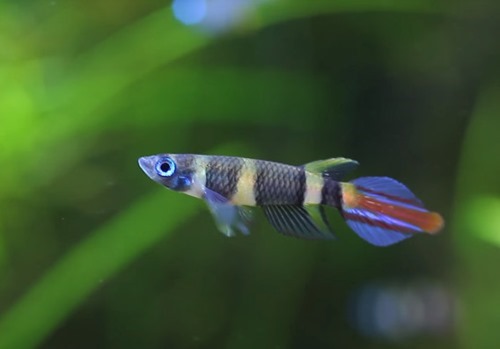
Clown Killifish (Epiplatys annulatus) rank among the smallest killifish, with males reaching 1.5 inches and females a petite 1 inch. Their banded beauty varies—males sport a golden-brown body with bold black vertical stripes, accented by red, yellow, or blue fin edges, while females are subtler, with muted tones and fewer markings. This diversity makes each fish a unique masterpiece.
Far from aloof, these killies are surprisingly social and curious. Unlike many shoaling species, they’re keenly aware of their surroundings. Drop in a net, plant, or even your hand, and they’ll swarm to investigate. Pass their tank, and they’ll dart to the glass, tracking your every move—a rare trait among nano fish. Initially shy, they blossom with time, revealing a playful charm once settled.
Surface-dwellers by nature, they spend much of their day hovering near the top, occasionally zipping around in energetic bursts. In our group of 10, a clear pecking order emerges: the dominant male, noticeably larger, rules with authority, chasing others without harm. Females spar less often, keeping tensions low. Their top-heavy presence can leave lower tank levels bare—lowering the waterline helps showcase them better.
Tank Setup and Layout
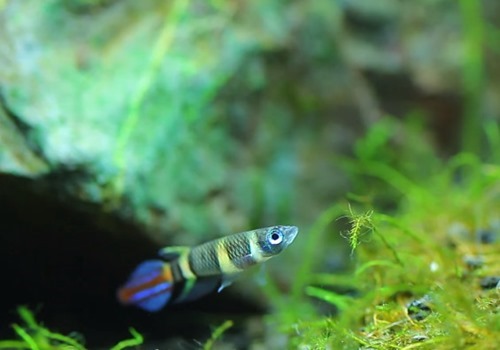
A 10-gallon tank suits Clown Killifish, but it must be mature and fully cycled—never uncycled. A tight lid is non-negotiable; these expert jumpers will leap at any chance. Low lighting, via dim LEDs or floating plants like duckweed, Azolla, or water lettuce, mimics their swampy origins and keeps them comfortable near the surface. Add Java moss or spawning mops for breeding potential.
They thrive in slow-moving water—choose a gentle sponge filter or adjustable power filter (set to low). A dark substrate (fine gravel or sand) paired with driftwood, rocks, and catappa leaves or alder cones enhances their colors and naturally softens pH to their preferred 6.0-7.5 range. Weekly 20-30% water changes maintain nitrates below 15 ppm, critical for their health in this soft-water setup (2-12 dGH, 73-79°F).
Their surface focus means mid and bottom decor can be minimal, but a few hiding spots ease stress during adjustment. This simplicity balances their needs with a visually appealing tank.
Tankmates and Stocking
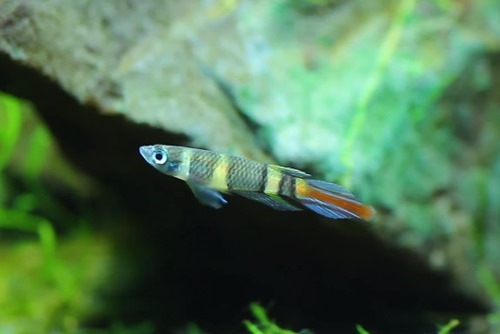
Clown Killifish are social and shine in groups of 8-10—2 males to 6 females balances hierarchy and minimizes sparring. Larger schools reveal their natural curiosity and playfulness, though males occasionally chase each other harmlessly. For breeding, a species-only tank is ideal to protect eggs and fry.
In community setups, pair them with small, peaceful fish like micro rasboras (e.g., chili, Phoenix), small tetras (e.g., ember), pygmy corydoras, otocinclus, or shrimp (ghost, cherry). Our killies adore pygmy cories, schooling together seamlessly, and ignore ghost shrimp despite close encounters—bright shrimp like red cherries should be safe too. Avoid aggressive or large tankmates (e.g., bettas, barbs) that could intimidate or prey on them. Introduce new companions cautiously, monitoring for stress.
Diet, Foods, and Feeding
Clown Killifish are strict carnivores, shunning flakes and pellets in favor of meaty fare. Offer live foods—rotifers, baby brine shrimp, blackworms, daphnia, mosquito larvae—or frozen equivalents (bloodworms, brine shrimp) to keep them vibrant and healthy. Feed small portions 1-2 times daily near the surface, where they hunt naturally. A varied diet enhances their colors and mimics their wild micropredator habits.
Overfeeding is a risk—they’ll gorge like bettas if given the chance. Remove uneaten food within 10 minutes to preserve water quality, especially in their low-flow environment. If transitioning stubborn eaters, start with live foods before testing frozen options.
Breeding Clown Killifish
Breeding Clown Killifish is tricky despite their eggs tolerating parental presence. Males court by flaring fins and chasing females, laying 10-20 tiny eggs daily on floating plant roots or spawning mops. A mature tank with dense cover and stable 75-77°F water encourages spawning—no seasonal cues needed. Eggs hatch in 10-14 days, but fry survival is low without intervention, as adults may eat them.
For success, use a 5-10 gallon breeding tank with gentle filtration and live foods (e.g., brine shrimp) to condition pairs. Remove adults post-spawn, or net eggs to a rearing tank. Fry emerge tiny, needing infusoria or micro worms for 2-3 weeks, then baby brine shrimp. They mature in 3-4 months—an advanced endeavor for dedicated keepers.
Diseases and Treatments
Clown Killifish are hardy but prone to stress-related issues like ich or fungal infections from poor water quality or jumping injuries. Watch for white spots, lethargy, or fin damage—quarantine new arrivals for 2-3 weeks. Maintain pristine conditions with regular water changes to prevent most woes.
Treat ich with heat (up to 79°F) and aquarium salt (1 tsp/gallon) for 7-10 days, or use half-dose malachite green. Fungal infections respond to API’s Pimafix—avoid copper, toxic to killifish. Weekly garlic-soaked food bolsters immunity, keeping these surface stars thriving.

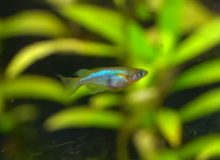
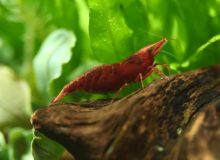
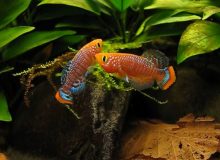
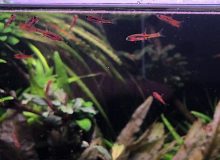
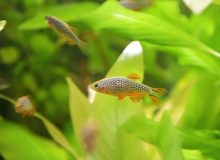
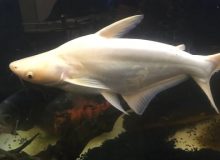
Leave a Reply